- Call us: 01444 237070
- Contact Us
- Stores
- Sign In / Register
-
- Back
- Used Cameras
- Used Accessories
- Used Lenses
- Used Video
- Used Film Equipment
- Used Stock Alert
- Used Blank Test
- Sell or Part Exchange
- Used Clearance
- Recently Added Used Equipment
- Park Picks
- All Used Black Friday Deals
- Faulty
- Trade-In
- Blog
- New in
- Call us
- Contact us
- Stores
- Sign in
- Categories
- Tips & Inspiration
- Reviews
- News
- Events
- Features
- Buying Guides
- Competitions
Canon RF 20mm f/1.4L VCM Lens Review
Canon’s hybrid stills and video lens lineup continues to grow with the launch of the RF 20mm f/1.4L VCM, which joins the recently released 24mm, 35mm and 50mm f/1.4L VCM versions. With this latest ultra-wide prime, Canon has delivered the widest perspective for hybrid creators, while maintaining a consistent design across the hybrid lens series.
Gareth's Canon RF 20mm f1.4 L VCM Lens Video Review
This first-look Canon RF 20mm f/1.4L VCM Lens Review takes a closer look at what the 20mm f/1.4 offers, who it’s for, and how it complements two other lenses in the VCM range of Canon mirrorless lenses.
Our very own Gareth Evans has also put the lens through its paces with his hands-on video review, while capturing some sample images that show off its capabilities, which are also included in this review.
So without further ado, let’s dive in with prices, release date and key features…
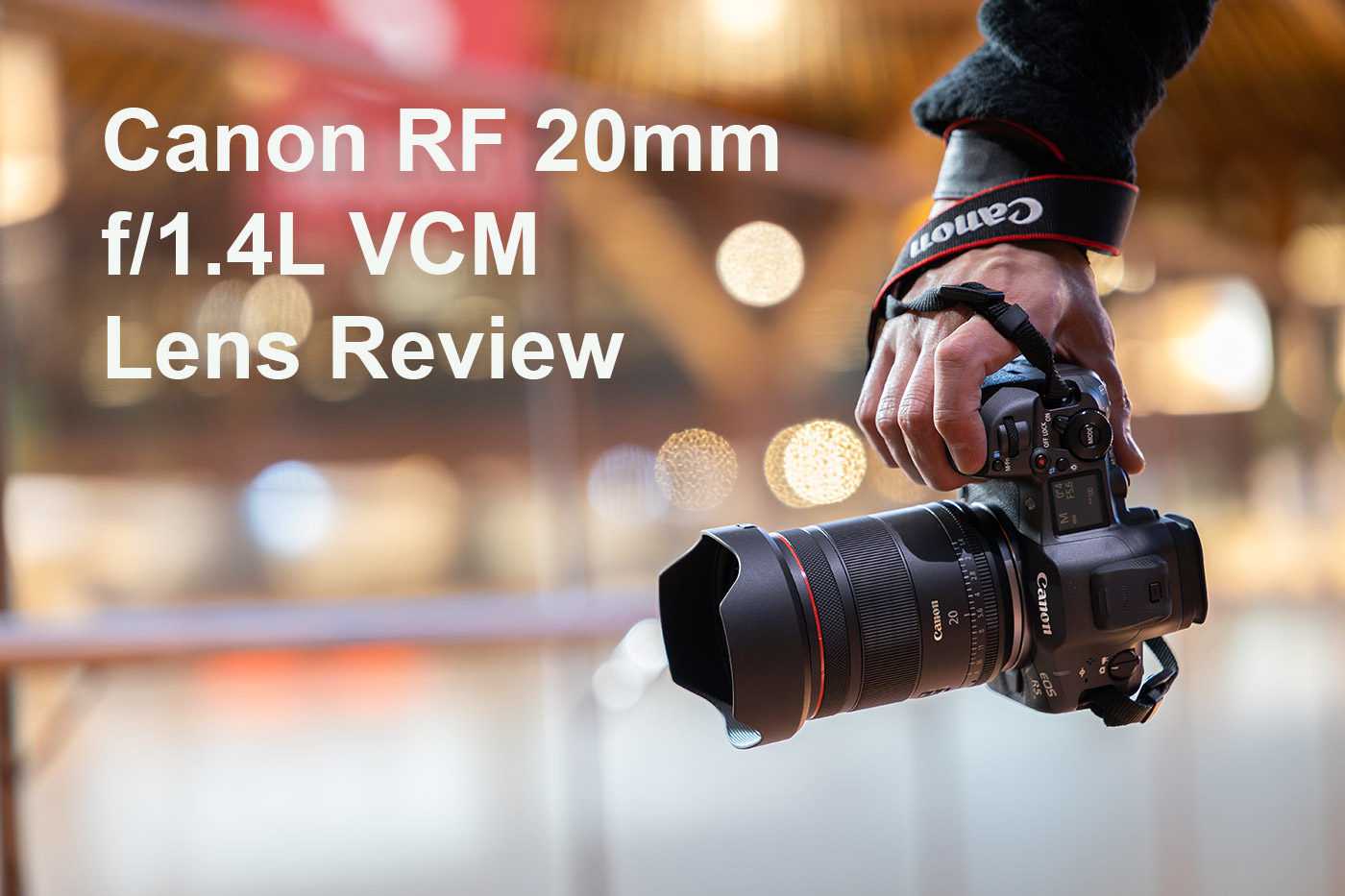
Price and release date
The Canon RF 20mm f/1.4L VCM Lens launches in the UK on the 26th March 2025 with a price of £1,919.00. This places it at the higher end of the lineup, above the RF 24mm f/1.4L VCM Lens (£1,679.00) and the RF 50mm f/1.4L VCM Lens (£1,539.00), while completing a set of fast hybrid primes for professional creators.
Although it carries a premium price tag, the lens is built to Canon’s L-series standards, with advanced optics, weather sealing and dual stills and video functionality. It’s aimed at working creators and photographers who need a high-performance ultra-wide f/1.4 lens for handheld and rig-based productions.

Sample image Camera settings 1/500 sec. f/8. ISO 200
Sample Images and Gareth’s First Impressions
During Gareth’s video review, the lens performed well when capturing seascapes, street scenes and architectural shots. The 20mm focal length gave plenty of room to include subject and context, without too much distortion causing distracting edges. The results show excellent clarity, well controlled fringing, and the kind of rendering that Canon L-series lenses are known for.
In the low-light sample shots, the lens held on to high levels of sharpness, even when shooting wide open, and produced pleasing bokeh from background lights. Video performance was equally strong, with accurate focus transitions and no distracting noise from the AF motors, even when he was recording close to the camera mic.

Why VCM lenses?
Canon introduced its new range of VCM L-series lenses, including the RF 20mm f/1.4L VCM, RF 24mm f/1.4L VCM and RF 35mm f/1.4L VCM, plus the 50mm VCM in order to support a growing generation of hybrid creators. As video production continues to outpace traditional photography, many advanced enthusiast and professionals now need lenses that can perform equally well for stills and video. Canon’s hybrid lenses meet this demand by combining optical image quality with video features.
The inclusion of a manual iris ring, ultra-quiet Voice Coil Motor (VCM) autofocus system, and customisable lens controls reflect the desire to bridge both formats. VCM technology in particular, delivers fast and near-silent autofocus, which is essential when capturing video without any AF motor noise. These lenses also complement Canon’s expanding mirrorless EOS R system, offering professional users more choice for creative workflows.
With the addition of the RF 20mm f/1.4L VCM, Canon now caters to a wider perspective, which extends the lens usefulness to ultra-wide landscapes, interiors, astro and video, while maintaining consistent handling and quality across the line. With that said, let’s see where it does fit into the VCM lineup.

Sample. Camera settings 1/400 sec. f/7.1. ISO 200
Canon’s Widest Hybrid Prime Lens
At launch, the Canon RF 20mm f/1.4L VCM is the widest in the hybrid f/1.4 prime lens range, and is designed to give stills photographers and video creators more room to work with. The ultra-wide field of view helps tell a broader story, placing more context into the frame without too much distortion creeping into the edges.
At just 519g, it’s also surprisingly light for an ultra wide RF mount lens with this aperture and build quality. It balances well on Canon EOS R cameras like the R6 Mark II and EOS R5 Mark II, and can be mounted on a gimbal or rig without complications thanks to its internal focusing and prime focal length. The compact size and consistent form shared across the 20mm, 24mm, and 50mm VCM lenses is a major benefit for hybrid shooters who work across genres and need fast primes without carrying overly heavy glass.

Canon sample. Camera settings 2 sec. f/11. ISO 100
Low-Light image quality
Despite this being an ultra wide angle lens, the f/1.4 aperture gives creators the ability to shoot handheld in low light, and to create a degree of separation between foreground and background. An 11-blade diaphragm produces smooth defocus areas, which is particularly noticeable when working with closer subjects or emphasising depth in architectural or interior photography.
Canon’s optical design consists of multiple elements combined to reduce aberrations and maintain sharpness across the frame, with Canon’s L-series weather sealing and fluorine coatings providing a high level of reassurance, which we’ve come to expect. The lens holds its own in outdoor conditions, just as any RF mount lens from this hybrid range.
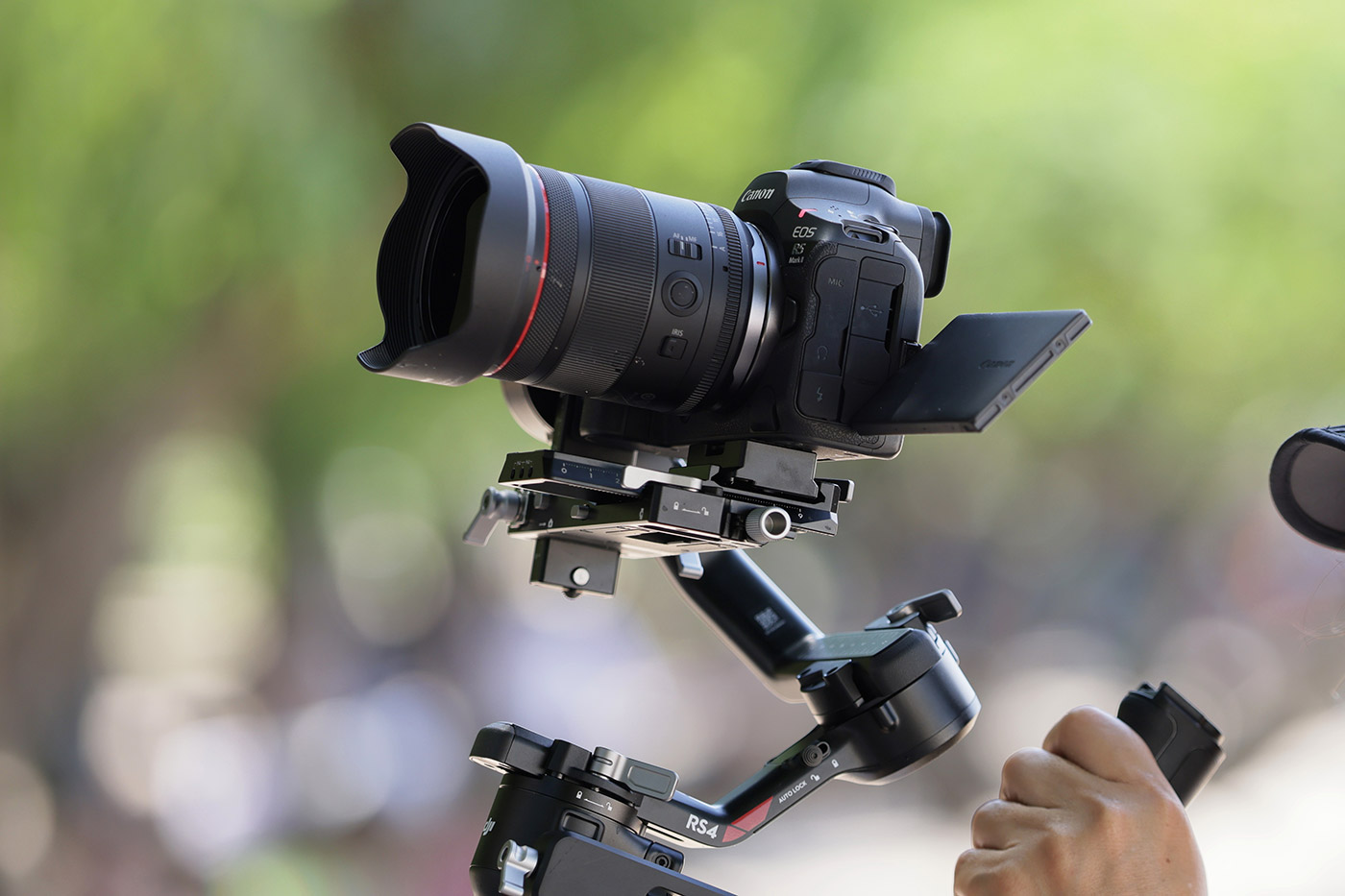
VCM Autofocus and Smooth Aperture Control
As with the 24mm and 50mm VCM lenses, the 20mm f/1.4 uses Canon’s Voice Coil Motor (VCM) for responsive and extremely quiet autofocus. A high-speed motor ensures that focus pulls are fast and smooth, which is something that is especially useful for hybrid creators who shoot both photo and video content.
Canon’s VCM system handles subject tracking for video and stills, with sharp results, even at the widest aperture. The lens also features a dedicated iris ring for manual aperture control, which can be de-clicked for silent adjustments during filming. This is a standard in Canon’s hybrid lens lineup, dues to being a useful tool for tactile exposure control from the lens itself.
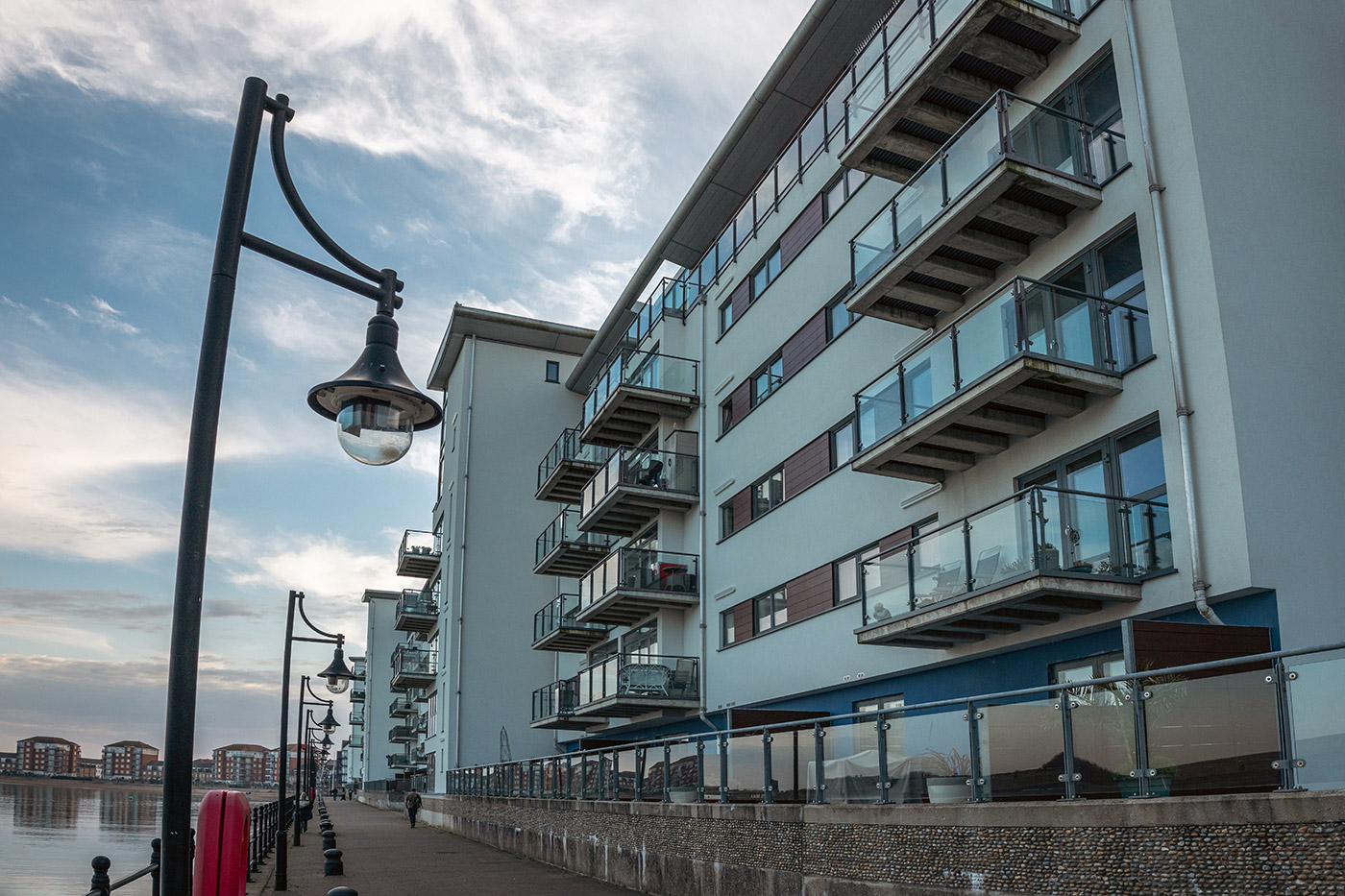
Sample. Camera settings 1/640 sec. f/7.1. ISO 200
Handling and Ergonomics
The RF 20mm f/1.4L VCM features a customisable control ring and lens function button, which can be assigned to settings like ISO, aperture, or AF method. This saves time in the field and avoids digging into menus during busy sessions. The physical layout matches the other two VCM lenses, for greater consistency when switching between focal lengths.
Despite its ultra-wide field of view, the lens maintains a compact size that doesn’t dominate your kitbag. It’s also just as at home on a gimbal for smooth stabilised recording as it is on a tripod for stills.

Canon sample. Camera settings 1/500 sec. f/2.5. ISO 100
Who’s This Lens For?
The RF 20mm f/1.4L VCM is suitable for creators who shoot any genre where wide-angle storytelling is beneficial. This could be landscape photographers who benefit from the wide field of view and edge-to-edge sharpness, night photographers who can take advantage of the bright aperture for capturing astro shots.
For interiors the extra space in smaller rooms without significant distortion is a bonus, and the wide view is also ideal for vlogging or YouTube channels where you want to show more of the environment around the subject.
This lens pairs naturally with hybrid Canon mirrorless cameras for video and is equally suited for gimbal mounting, recording interviews, or documentaries.

Sample. Camera settings 1/3200 sec. f/2. ISO 320
Canon RF 20mm vs RF 24mm vs RF 50mm f/1.4 L VCM lens comparison
If you’re comparing Canon’s latest hybrid prime lenses, our Canon RF 20mm vs RF 24mm vs RF 50mm f/1.4 L VCM lens specs comparison table highlights key specifications side by side. If you’re looking for the best Canon lens for video, vlogging or low-light photography, this helps to identify the best ultra-wide or standard prime for your workflow.
|
|
|||
|
Focal Length |
20mm |
24mm |
50mm |
|
Maximum Aperture |
f/1.4 |
f/1.4 |
f/1.4 |
|
Minimum Aperture |
f/16 |
f/16 |
f/16 |
|
Lens Construction (Elements/Groups) |
15/11 |
15/11 |
14/11 |
|
Special Optics |
1x Super UD 2x UD 1x BR 2x GMo Aspherical |
2x UD 1x GMo Aspherical |
1x UD 2x Aspherical (1x GMo) |
|
Format Compatibility |
Full-frame |
Full-frame |
Full-frame |
|
Autofocus System |
VCM + Nano USM |
VCM + Nano USM |
VCM + Nano USM |
|
Image Stabiliser IBIS x OIS |
No |
Center 8.0 stops Corner 7.5 stops |
Center 8.0 stops Corner 7.0 stops |
|
Aperture Blades |
11 (circular) |
11 (circular) |
11 (circular) |
|
Minimum Focus Distance |
0.2m |
0.24m |
0.39m |
|
Maximum Magnification |
0.19x |
0.17x |
0.18x |
|
Filter Size |
67mm |
67mm |
67mm |
|
Weather Sealing |
Yes |
Yes |
Yes |
|
Coatings |
ASC, SWC, Super Spectra, Fluorine |
ASC, SWC, Super Spectra, Fluorine |
ASC, Super Spectra, Fluorine |
|
Dimensions (approx.) |
76.5 x 99.3mm |
76.5x 99.3mm |
76.5x 99.3mm |
|
Weight |
519g |
515 g |
580 g |
|
RRP |
£1919.00 |
£1,679.00 |
£1,539.00 |
Canon’s hybrid prime lens trio now spans 20mm, 24mm, 35mm and 50mm, which each offering different framing options for creators.
- The 20mm is the widest of the three for extreme wide-angle situations
- The 24mm offers a slightly narrower field, which is better suited to general-purpose shooting
- The 35mm is favoured for the natural perspective, but slightly wider field of view
- The 50mm sits in the standard focal length range, which is ideal for portraits, and standard compositions
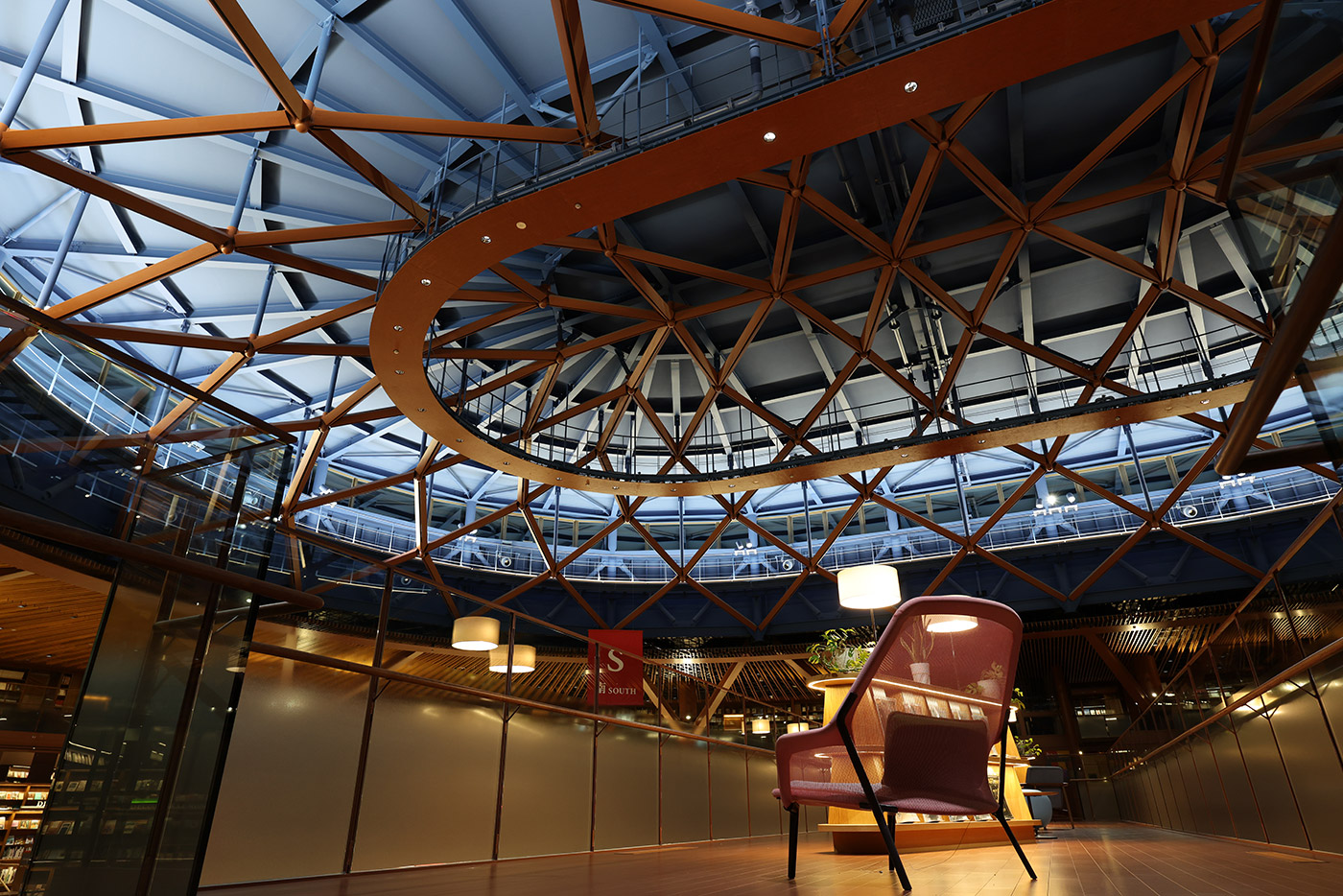
Canon Sample. Camera settings 1/40 sec. f/5.6. ISO 800
All three share the same bright f/1.4 aperture, quiet dual-motor AF system, iris rings, and consistent handling. This makes it easy to integrate a video-centric hybrid workflow where switching focal lengths is often routine. Whether you shoot b-roll, interviews, vlogs, or timelapse, the trio now covers most creative situations without needing a zoom lens.
The Canon RF 20mm f/1.4L VCM Lens builds on the strengths of the preceding hybrid lenses, adding an ultra-wide option for creators who need to fit more into the narrative for storytelling. It’s compact, bright, and packed with hybrid-friendly features that make both stills and video easy to capture.
Canon has created a consistent set of fast prime lenses that match in size, functionality, and handling. If you’re already using the RF 24mm, 35mm or 50mm f/1.4L VCM, the new 20mm lens slots in naturally adding a wider angle without significantly changing your setup.
Order your Canon RF 20mm f/1.4L VCM lens today and see what this exciting addition to the growing RF lens system can do for your ultra wide creativity.
If you’re upgrading, why not get a fast, free trade-in quotation? We take the hassle out of selling your old camera equipment with a convenient trade-in process.
Share this post:
By NIck Dautlich on 26/03/2025
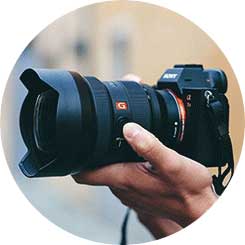
Trade in your old equipment
Fast and easy trade in service ensures your old gear is collected efficiently and you are paid quickly! It's very simple to trade in your unwanted photography gear. Just head over to our dedicated Sell or Part Exchange page, fill out the details, and we'll get back to you with an offer for your old gear. Take the cash, or put it towards the cost of your new gear. It's up to you! Find out more
sign up to the newsletter
Keep up to date on the latest photography news, events and offers. Sign up now
